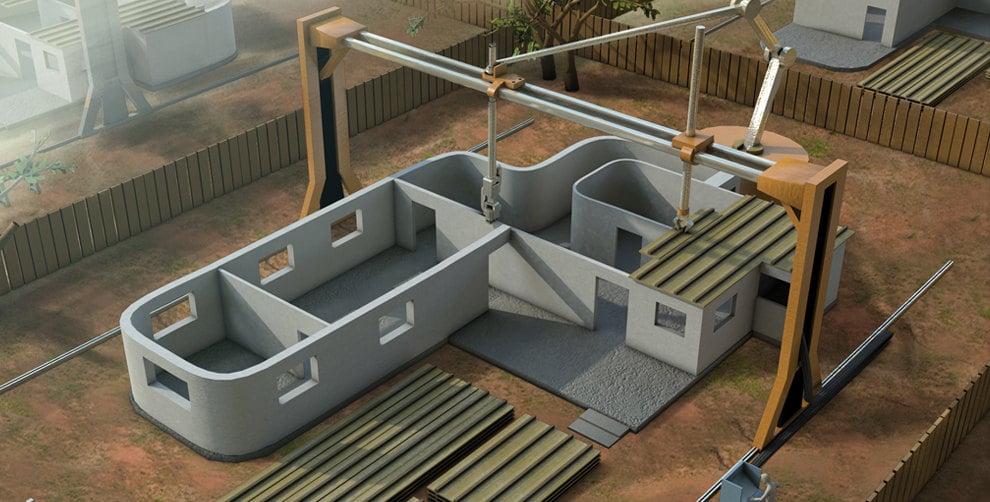3D printing applications have the potential to be a game changer in the design and construction of buildings.

This evolving technology offers a cost-efficient alternative to traditional methods that have been used for centuries in the manufacturing of core building materials, such as concrete. The adaptation of 3D printing technology for construction related activities is a boon for meeting the housing needs of low-income residents seeking affordable housing solutions in the United States.
What are the ways in which 3D technology is “paving the way” for more cost-efficient creation of concrete and other materials? The introduction of this technique, being tested on a limited scale today, holds much promise for the future. Is this type of solution something that is both viable and sustainable for the future? Many predict that yes, concrete developed through 3D printing may represent the reality for building housing in the future. Here is a look at the issues regarding 3d-printed concrete and potential to create affordable housing solutions.
The development of Contour Concrete (CC) by USC professor Behrokh Khoshnevis, using a concrete extruding 3D printer, enabled the construction of a 2,500 square foot home in about 20 hours. This breakthrough in building construction will theoretically make it possible for builders to reduce building time, lower costs and reduce on-the-job injuries. This technology, referred to as lightning-quick fabrication process for 3D printing concrete, is being developed under funding provided by both the Office of Naval Research and the National Science Foundation.
Projects similar to USC CC building and the fabrication of the world’s first 3D printed concrete castle by Andrey Rudenko have given credence to the possibility of these structures representing the way buildings of the future will be constructed. Texas student Alex Le Roux’s RepRap-based 3D concrete printer is another development in the way houses will be constructed in the future by harnessing the power of technology in order to meet future housing needs.
It may be too early to determine the viability of 3D printing concrete as the process is still being developed and tested in different applications. Le Roux points out challenges in creating concrete for home construction (e.g., obtaining the correct thickness for the cement) in a July 2015 article by 3D Printing Industry. These challenges will need to be addressed and solved by developers quickly. Growing interest in how this technology shows how it may change the world we live in over the next several decades.
The SmartThings Future Living Report (commissioned by Samsung’s SmartThings IoT firm) suggests that the future of commercial and residential buildings will be 3D constructed homes, super skyscrapers and underwater cities. Other reports featuring opinions of futurists and academics also suggest that 3D-printing will loom large in the future of construction. The advantages derived from 3D printing concrete seem to belie any concerns over long term viability or the sustainability of this developing construction trend.
About the author: Andrew Armstrong is a technology enthusiast, business owner, and new home owner based in the San Francisco Bay Area.